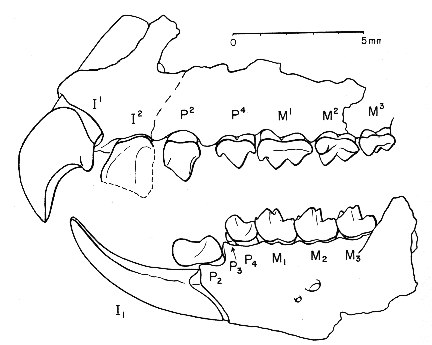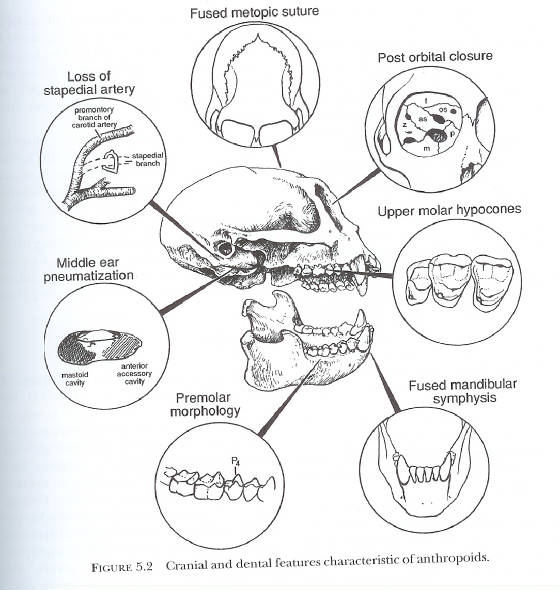Lemurs are arboreal primates, meaning they are usually found living in trees. Lemurs are found only in the island of Madagascar and near islands off the coasts of Africa. Lemurs can also adapt to any environment and also live in any environment. Lemurs are anatomically similar to their ancestors as in humans, monkeys, apes, and tarsiers. Primates that share a group of characteristics is because th adaptation to arboreal living. Arboreal living primates usually went on the ground to look for food, but the food that Lemurs eat which is leaves, seeds, and fruits were in the tree itself.Lemurs dentition is heterodent with a pattern of two incisors, one canine, three premolars and three molars. Lemurs commonly use their teeth for feeding and grooming purposes.
Baboon (Old World Monkey/Cercopithecidae):
Baboons are found throughout the sub-Saharan Africa. The baboobs species are very adaptive, they can live in trees or on land. Baboons will eat depending on where they live. In they are in trees, they will eat nuts, fruits, seeds, and leaves. If they are on land they occasionally kill and eat small mammals. A baboon's dentition pattern consist of two incisors, one canine, two premolars, and three molars. Gibbon (Lesser Ape/Cercopithecidae): Gibbons are found in islands, Southeast Asia, and China. They are usually found in tropical rainforests. These species are the smallest in their ape species. Since Gibbons are in trees, they eat stuff from the tree, such as fruits, nuts, seeds, leaves, flowers, and insects. A gibbon's dentition pattern is two incisors, one canine, two premolars, and three molars.
Chimpanzee (Great Ape/Hominidae):
Chimpanzees are found across Central Africa in rainforests. Chimpanzees can spend their entire life in trees, they have their food in the trees they live in. Just like other primates living in trees, chimpanzees eat fruit, leaves, and small insects. Chimpanzees have a dentition pattern of two incisors, one canine, three premolars, and three molars.
Summary:
These five primates have very similar dentition patterns; incisors, canines, premolars, molars. The dentition pattern is generally three incisors, one canine, four premolars, and three molars; primates have fewer teeth because of overall evolutionary trend. These primates relatively have similar diet habits. Mostly fruits, nuts, seeds, and leaves. The lack of size and shape in their teeth are related to the lack of dietary. Carnivores are animals who have high premolars and molars because of what they eat (meat), and herbivores have broad and flat surfaced premolars for chewing plants. But most primates have premolars and molars with low and rounded molar morphology and this allows the primates to chew most of their food. Their dentition pattern is becuase of their evolutionary history, their teeth have adapted to what they eat. Their incisors and canines are for biting and cutting and their premolars and molars are for chewing and grinding.




That first image of yours was very good and clearly outlined the various traits of the lemur dentition, not just tooth number but the specific morphology of each tooth. Notice those front lower teeth which form a derived trait called a "tooth comb" that lemurs use for grooming and eating. There are interesting looking cusps on the back molars. I clicked on the image, however, and it took me to a piece on fossil primates. The image doesn't represent modern lemurs but a Paleocene mammal with ties to both rodents and primates. Make sure what you are posting represents the topic of focus.
ReplyDeleteGood descriptions of the environment for each primate. With regard to dental descriptions, dentition is more than just the dental formula. It also includes unique, derived traits (tooth comb) and the shape of the teeth themselves. Flatter molars? Probably a fruit eater. High cusps? Insect eater. Broad incisors, shearing complex, and high shearing crests on the molars? Primarily a leaf eater. There are direct connections between what the teeth look like and what the primate eats. You actually raise this point in the summary, but you don't back it up in the five primate sections.
(Note: Your last image isn't a chimpanzee. I believe it's a Capuchin, like the monkey on Pirates of the Caribbean. Problems viewing your other images. Make sure you save images to your computer and then upload them into your post.)
Hi Jessica,
ReplyDeleteI really enjoyed reading your post. All those monkeys look scary when their teeth are showing!! I found it interesting that spider monkeys don't eat their food, they just swallow it whole. I wonder why that is though. If they have a lot of sharp teeth, then wouldn't spider monkeys use them to breakdown their food? Just some food for thought!